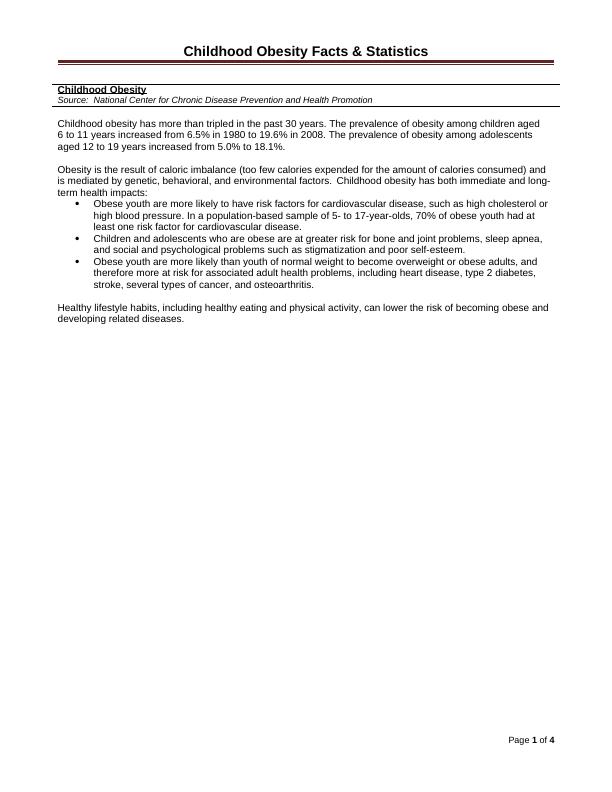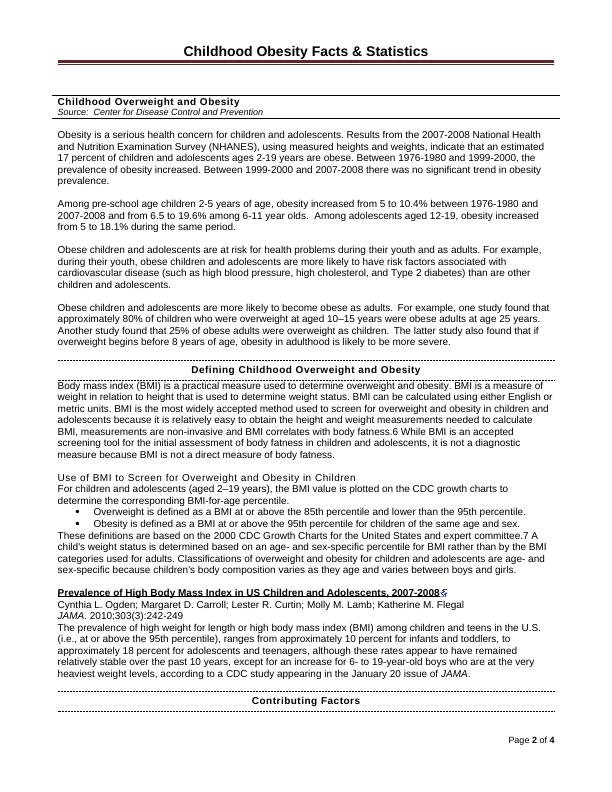Childhood Obesity Facts & Statistics
4 Pages2365 Words478 Views
Added on 2023-05-29
About This Document
Childhood obesity has more than tripled in the past 30 years. The prevalence of obesity among children aged 6 to 11 years increased from 6.5% in 1980 to 19.6% in 2008. The prevalence of obesity among adolescents aged 12 to 19 years increased from 5.0% to 18.1%. Obesity is the result of caloric imbalance and is mediated by genetic, behavioral, and environmental factors. Childhood obesity has both immediate and long-term health impacts.
Childhood Obesity Facts & Statistics
Added on 2023-05-29
ShareRelated Documents
End of preview
Want to access all the pages? Upload your documents or become a member.
A Report on Childhood Obesity
|9
|1533
|25
Obesity Among Children Issues 2022
|7
|1939
|6
Obesity and Overweight Assignment PDF
|8
|2477
|65
Impact of Obesity on Psychological Well-being of Youth
|9
|1672
|212
NURS1018 - Obesity in Australia - Essay - Desklib
|11
|3644
|1292
Obesity: Determinants and Prevention Approaches
|13
|3511
|469


